4 min read
Meet the TurboTeam: Goran Maksimovic
And then you realize that the people are your source that you’re learning from. And the people keep you in company and...

Most of us look forward to the arrival of summer each year. It’s a time for backyard barbecues, pool parties and relaxing in the sunshine. Unfortunately, summer is also a favorite time of year for pesky insects. If you see a cockroach scuttling across the floor or experience an ant infestation, it can be tempting to go to town with chemical sprays to wipe them out.
However, traditional pesticides contain many ingredients that are harmful to all living creatures, not just insects. In order to keep yourself, your family and your pets safe this summer, take a look at your natural pest control strategies for the most common bug invaders. You can also jump to the full infographic below.
Ants are some of the most common household insects to deal with during the summer. Drawn indoors by the alluring smells of overripe fruit or sticky jam spills, they’re hard to remove once they’ve chosen your counters as a food source. Though harmless, the sight of dozens of ants crawling around your food isn’t appealing. However, ants are actually averse to the smell of peppermint and making your own natural bug repellent is easy.
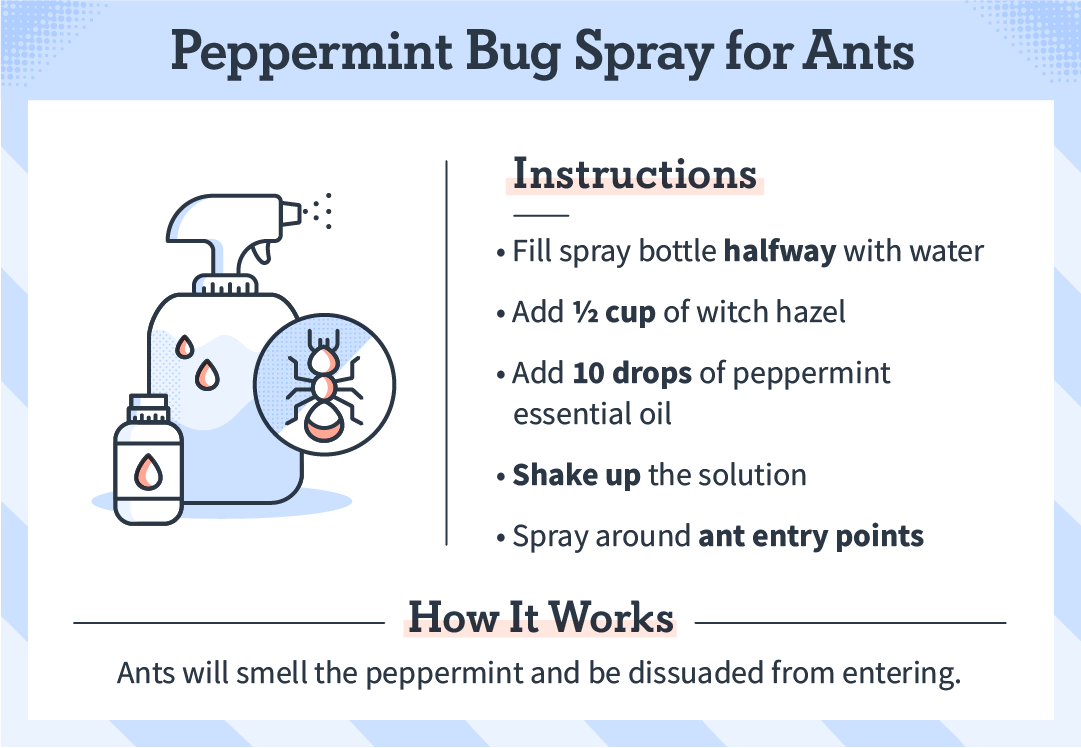
In addition to dousing ant-prone areas with homemade peppermint spray, eliminating the ants’ food source is the most effective way to keep these pests at bay. This means being meticulous about cleaning up after every meal. Wipe down kitchen surfaces every night and be sure to sweep and mop at least every few days.
Though bright lights won’t hurt ants, they do prefer dim or dark lighting. If you can identify where the ants are getting into your home, try shining a bright light at their entry point. This drastic change in lighting can confuse the ants and disrupt their established foraging patterns.
There is perhaps no household pest as hated as the bed bug, and the warm summer weather only encourages them to breed. These crafty critters can actually move to different pieces of furniture throughout the home, so simply getting rid of the infested mattress may not always be enough. Fortunately, the use of diatomaceous earth has proven effective in killing a number of household insects including bed bugs. Diatomaceous earth is a type of sand made from fossilized algae.
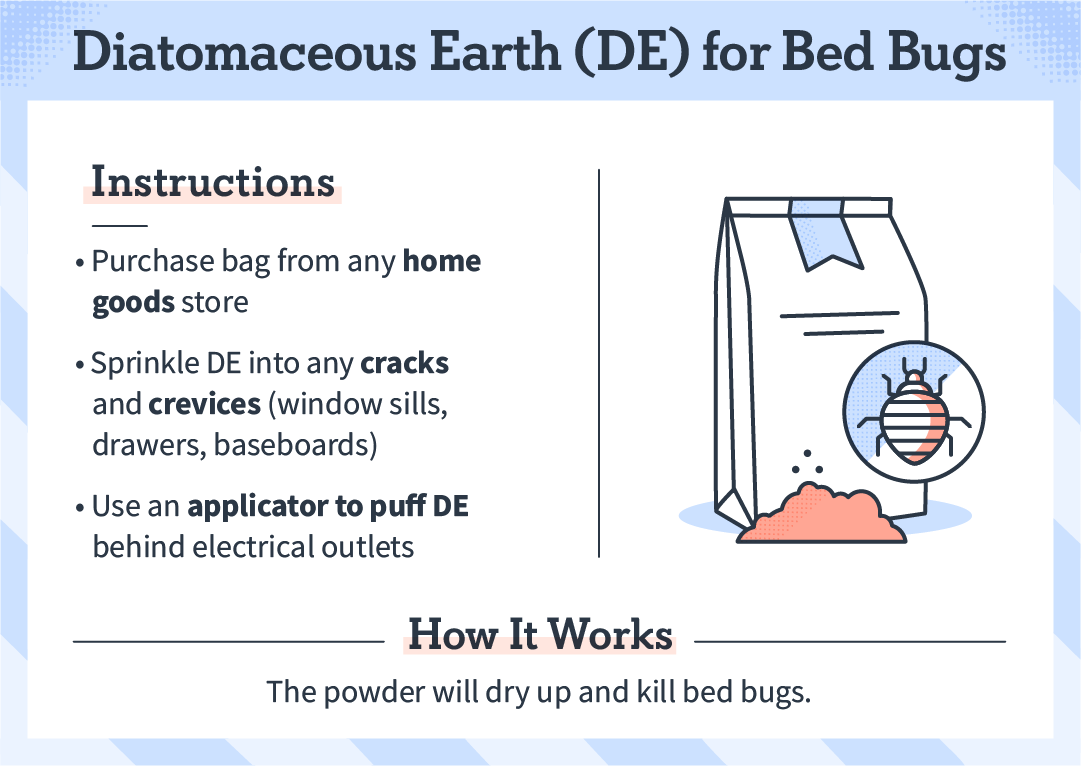
If spreading diatomaceous earth isn’t enough to get the job done, you can also try using baking soda. Simply spread the powder around the infestation sites, making sure to get into all the cracks and crevices where bugs like to hide. The baking soda works by permeating the insects’ exoskeleton and drying them out. Be sure to vacuum up the dried out bugs and reapply the baking soda every few days.
In addition to the methods above, you should thoroughly wash all sheets, blankets, pillows, furniture covers and any other bedding on the infested pieces of furniture. Wash and dry on the highest heat cycles the items can withstand, as it takes temperatures of at least 120 degrees Fahrenheit to kill bed bugs at all life stages. If you have any delicate items that can’t be washed, you can also place them in a sealed plastic bag and leave them outside in the sun for several days.
Another harmless but disgusting pest, it’s said that cockroaches can withstand a nuclear explosion. As it turns out, they can’t even withstand being sprayed with soapy water. Take a look at the reasons why:
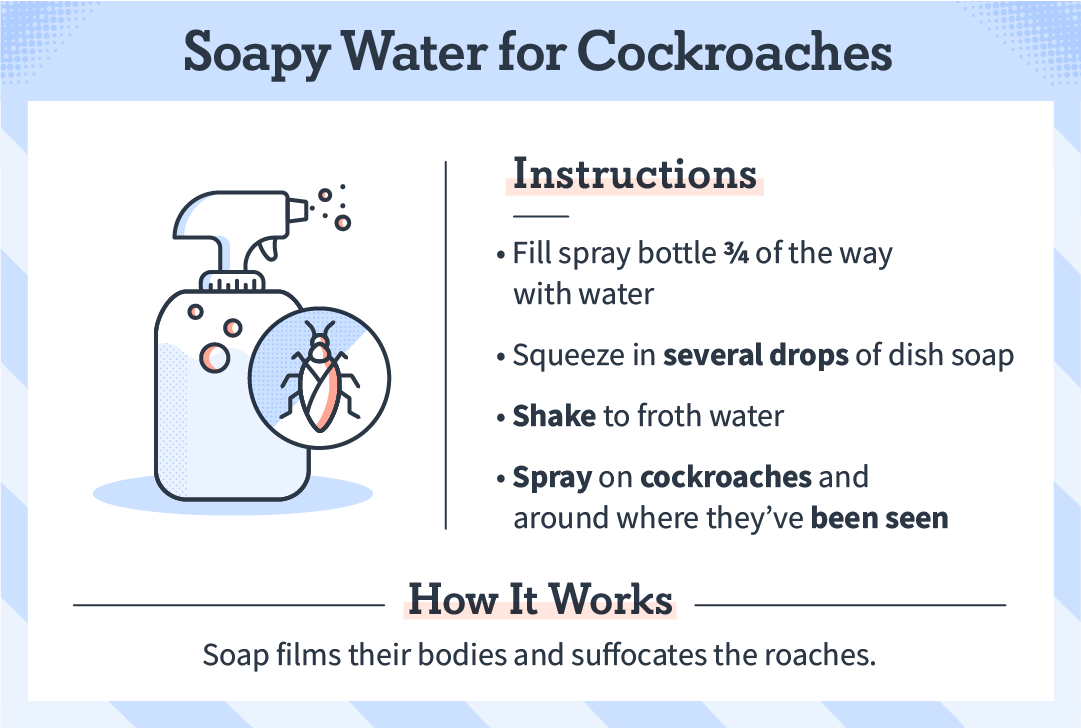
Similarly to bed bugs, baking soda will kill cockroaches by drying them out. In order to ensure they are exposed to the baking soda, simply mix it with white granulated sugar to attract the bugs and place the mixture in shallow dishes where you have seen the cockroaches. Try to place the sugar traps in shadowed or secluded areas, as cockroaches prefer to stay away from open spaces. Check the traps for dead bugs and refill the mixture every few days as needed.
Roaches are also attracted to the smell of coffee grounds, which you can use to your advantage. To make a coffee trap, fill a glass jar halfway with water and mix in a few spoonfuls of coffee grounds. Then smear vaseline around the rim of the jar to make it difficult for them to escape. The cockroaches will be drawn to the grounds but be unable to escape the jar and eventually drown. Try placing a few of these around the house, and be sure to check every day to dispose of the insects.
Boxelder bugs are a common summer nuisance, especially for those living in the Eastern or Midwestern U.S. They primarily reside on the boxelder tree for which they are named, but in the summer will swarm the sun-drenched sides and doors of buildings. Many inevitably find their way inside when the weather begins to cool off.
Though harmless, it can still be startling to find one crawling up your arm or on your couch pillow. Many insects, including the boxelder bug, are averse to chemicals found in chrysanthemums which can easily be made into a spray. Take a look at our instructions below:
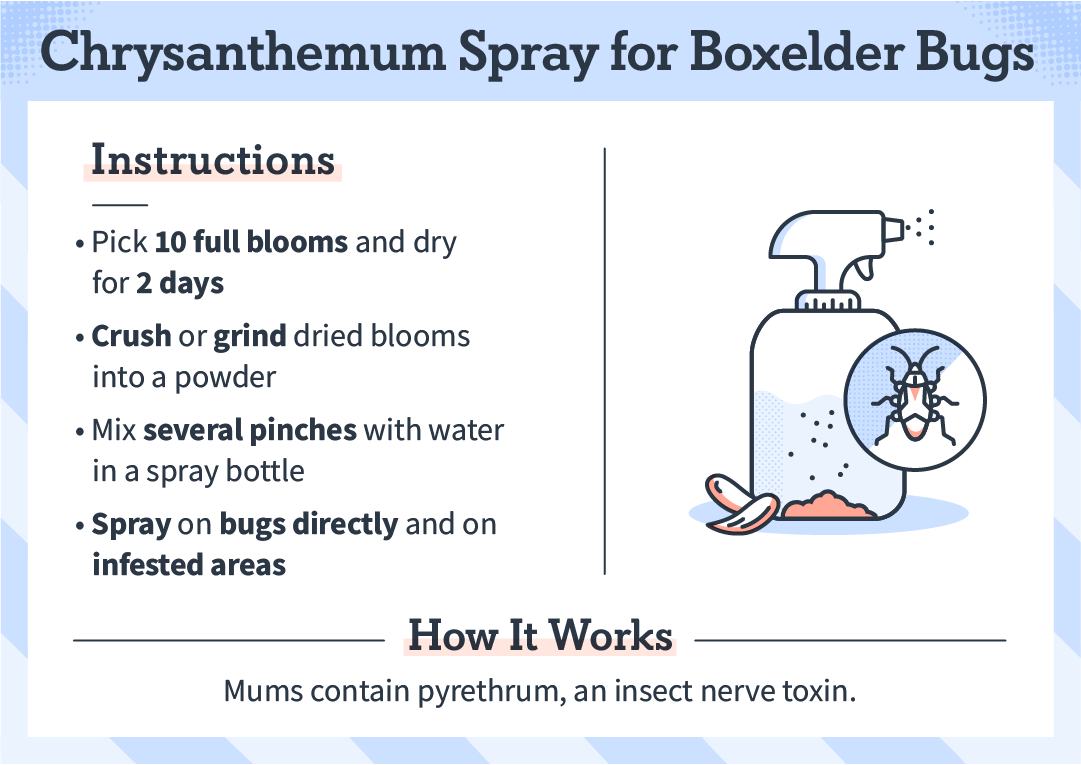
Though chrysanthemum spray is a great method for deterring boxelder bugs, sealing up their entry points is essential to preventing them from getting inside your home. Though they are irritating in the summer, autumn is when boxelder bugs really start to get inside to avoid the cold weather. Before that happens, be sure to seal up all the nooks and crannies around windows, doors and baseboards.
The easiest way to get rid of boxelder bugs inside the home is to just vacuum them up. Make sure to regularly empty the shop vac into a sealed trash bag in order to prevent the bugs from escaping. Depending on the type of shop vac you have, you can also add a small amount of water and dish soap into the tank to kill the bugs directly.
Have you ever tried to make pancakes for the first time in months, only to find your pancake mix infested with bugs? If so, they were most likely pantry moths. Pantry moths feed on foods like flour, sugar, baking mix, cookies, crackers and pretty much anything else they can burrow in. In order to keep them out of your kitchen cupboards, try utilizing lavender and bay leaves as they are naturally averse to these smells.
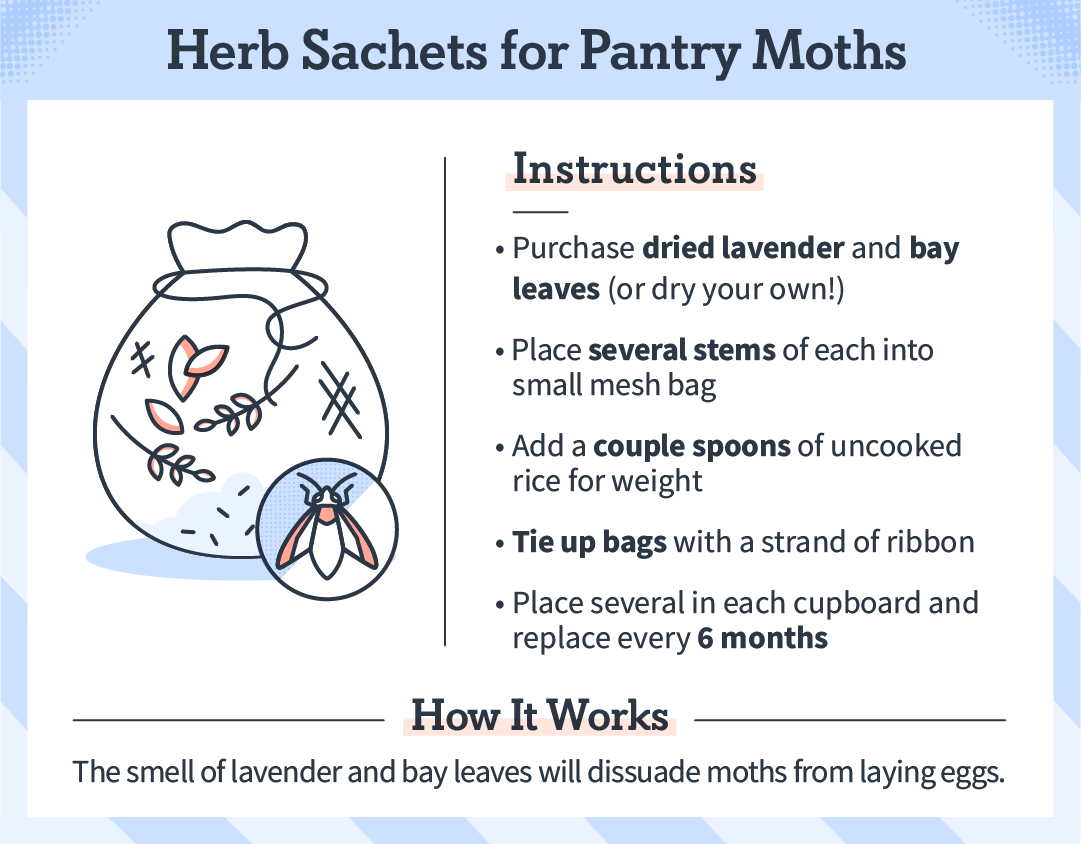
Though DIY herb sachets are a great way to deter pantry moths, they won’t do much against an already established infestation. The best thing you can do to get rid of a colony in your cupboards is to thoroughly clean them out. Dispose of any food that contains the moths in an outside trash bin, then vacuum the corners of the cupboards to pick up any stray bugs. After this, thoroughly wipe down all of the cupboard surfaces with organic vinegar to kill any remaining eggs.
In order to prevent any future infestations, you should consider using storage containers such as mason jars or sealable plastic bins. These make it impossible for the moths to get into the food. You should also make sure to clean out your cupboards every few weeks or so and get rid of any snacks you know you won’t eat.
Much like ants, fruit flies are drawn indoors by the prospect of a sweet treat. However, they are arguably more irritating as they can fly and are hard to catch. Luckily, there is an established method for trapping and killing fruit flies using apple cider vinegar.
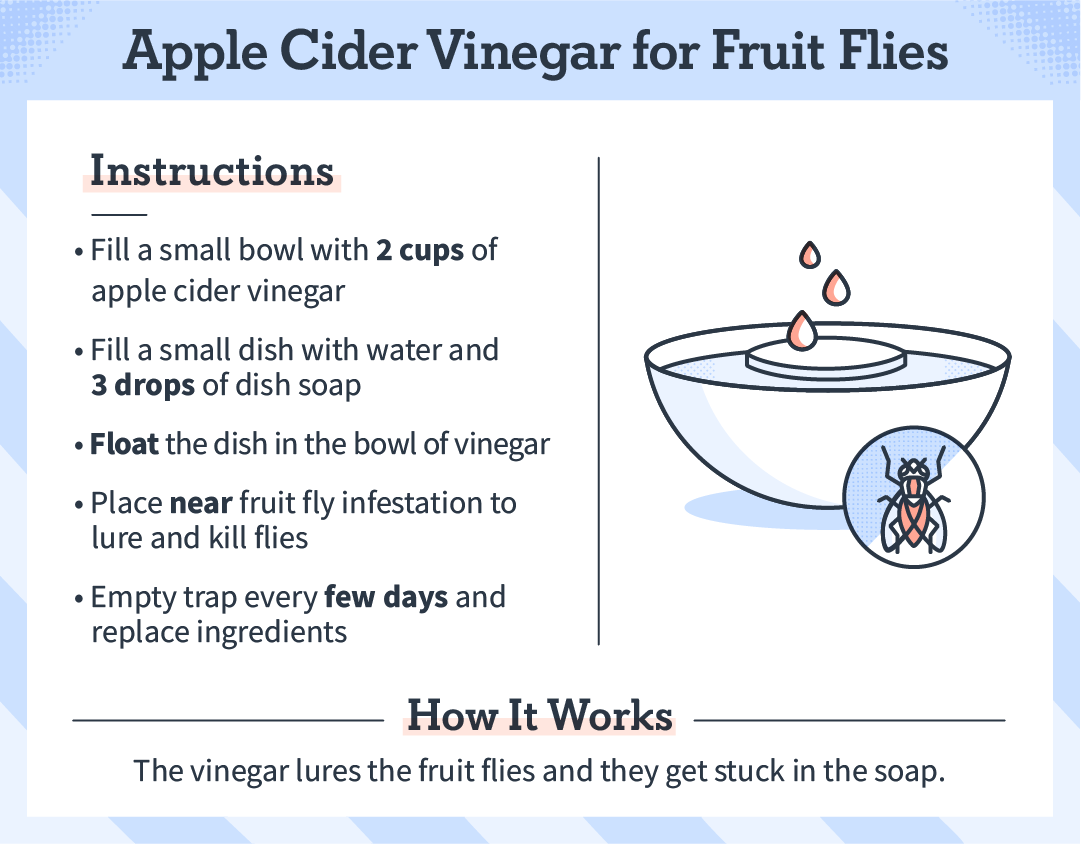
There are many other fruit fly traps that also work well in eliminating these household pests. If the apple cider vinegar trap is too messy for your taste, try the fruit and cone trap. All you need to do is put a piece of ripe fruit at the bottom of a glass jar, and then roll up a piece of paper to make a funnel. Making sure that the funnel is wide enough to fit snugly to the sides of the jar, tape it in place with the narrow side in the jar. The fruit flies will be drawn by the fruit into the funnel, and then be unable to escape the jar.
Instead of getting rid of your empty wine bottles, use them to trap fruit flies instead! This trap is basically the same as the fruit and cone trap, but even easier since you don’t have to make the cone. Simply leave out a bottle or two of wine with a splash left in each, and the fruit flies will be drawn to the smell. Once they fly in, they won’t be able to escape the narrow neck of the bottle. Be sure to dispose of the bottles every couple of days.
Dust mites can be an issue throughout the spring and summer, as they thrive in warmer temperatures and higher humidity. These pesky little allergy triggers usually reside in furniture, and are averse to eucalyptus oil. Take a look at our recipe for eucalyptus spray below. Just remember to properly dilute this potent essential oil, and don’t use it near any household pets.
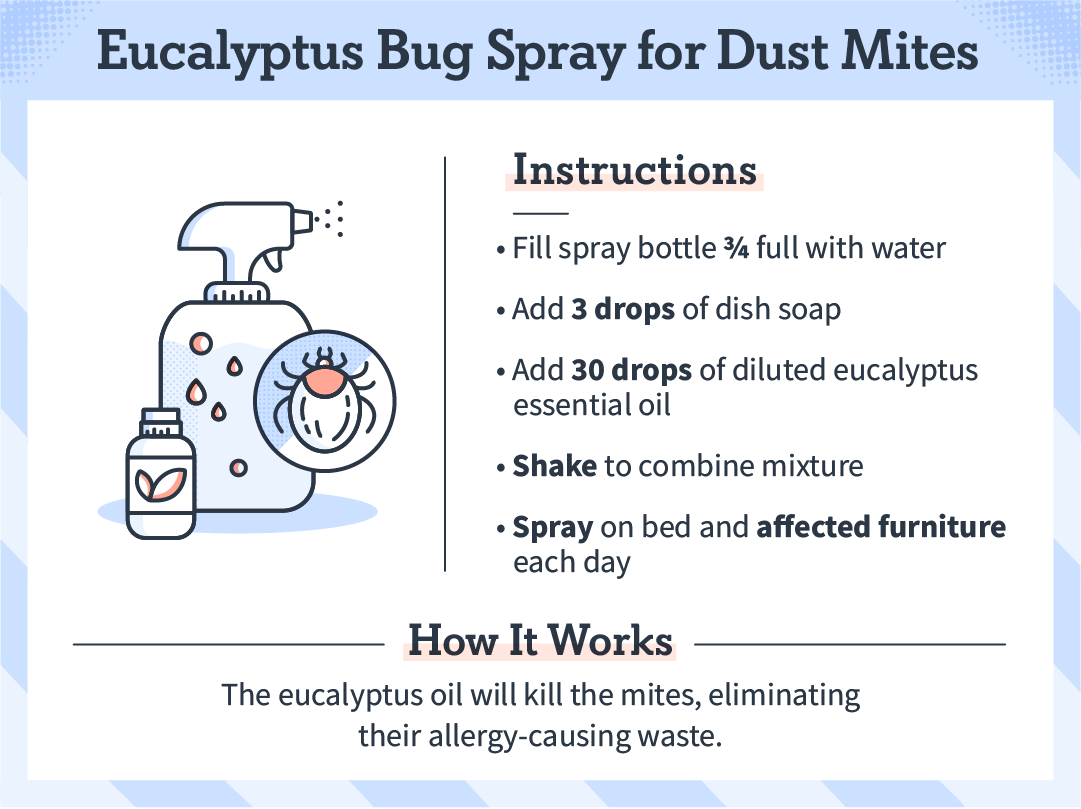
If the eucalyptus spray isn’t doing the trick, high temperatures definitely will. Because dust mites are so small (microscopic in fact) they can burrow deep into fabric and it can be difficult to dislodge them. Using a steam cleaner is one of the best ways to kill stubborn infestations as the steam, unlike a vacuum cleaner, can penetrate into the fabric.
Dust mites prefer humidity levels of 70 to 80 percent, which is why allergy symptoms can worsen in the warmer months. Investing in a dehumidifier can work wonders in culling the dust mite population in your home.
Summer flies can swarm in through open windows and doors by the dozens, looking to feast on leftover food and drink spills. Though they do not usually bite humans, they are definitely a nuisance and can particularly bother cats and dogs. Black flies can easily be killed using the sugar bottle we’ve outlined below:

Another effective way to catch flies is to hang fly paper around the kitchen and doors. Though the sight of a full fly paper is pretty disgusting, there’s no doubt that it works. To make your own, cut up strips of sturdy brown paper at whatever length you desire (paper grocery bags work great). Then, boil a mixture of water, sugar and honey. Let the mixture cool a bit and spread it on the strips of paper. Hang them up and you’re ready to go — just be sure to dispose and replace every few days as needed.
Black flies are averse to the smell of basil, which you can use to your advantage. Keep potted basil plants in the kitchen and on window sills to discourage flies from entering your home. If you have a garden, you may also want to plant fresh basil as an additional deterrent.
It’s important for everyone to feel comfortable in their homes, and that can be tough if your space is invaded by creepy crawlies. Landlords should keep these strategies in mind in order to help tenants with bug infestations this summer, without the use of harmful pesticides. If you’re ready to get started on your landlord journey, be sure to check out our free tenant screening services.
Sources: Pesticide Action Network UK | Ants | BugOfff | The Spruce | Hunker | Lifehack | Knowledge Weighs Nothing | Good Housekeeping | AAFA | Gardening Know How | How Stuff Works | Flies Only
4 min read
And then you realize that the people are your source that you’re learning from. And the people keep you in company and...
5 min read
We have this really good integration. We make them feel like they are part of the company....but it’s like we also make...
4 min read
Well, I guess the thing that pops into my mind right now is you have a lot of freedom to do things...
Join the 700,000+ independent landlords who rely on TurboTenant to create welcoming rental experiences.
No tricks or trials to worry about. So what’s the harm? Try it today!